
In this pandemic and remote work period, healthcare professionals want an easier way to connect with patients anytime.
Design an app to help small healthcare businesses manage their schedule from the couch.
UX researcher, UX Designer and Visual designer
Conducting user interviews and research, paper and digital wireframing, low and high prototyping, conducting usability studies, accounting for accessibility, and iterating designs
To start the project, I conducted interviews with a few healthcare professionals to gain a deeper understanding of the problem. During the interviews, I inquired about the pain points they experience while attending to patients, and what they think can be improved, and asked many “why” questions to get to the root of the problem.
This user research helped me to understand and identify users’ pain points and needs. The primary users are healthcare workers who want an easy way to record Patients’ info, track, and schedule appointments, and set reminders.
This changed the early assumption that hospitals needed a calendar and database system to store patient records.
Most CRM for healthcare businesses are only in the desktop version.
Most available client management systems are complex and challenging for those with little knowledge of computers.
Most Client management apps are for many purposes and industries, not only for hospitals.
I find it confusing to monitor and follow up with appointments.
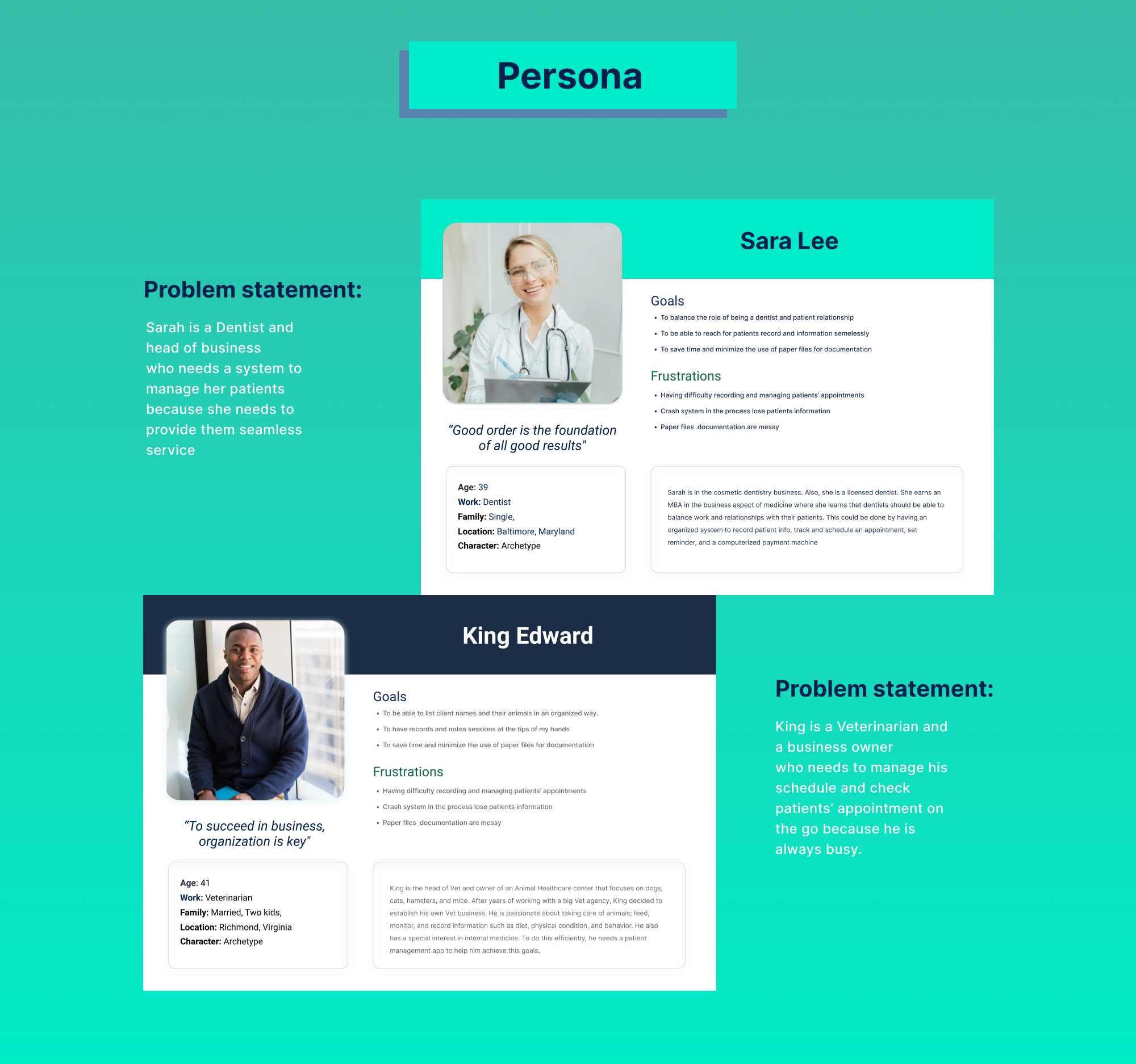
Mapping Sarah’s User journey revealed how helpful it would be for users to set appointments and record sessions using this app in a hospital setting.
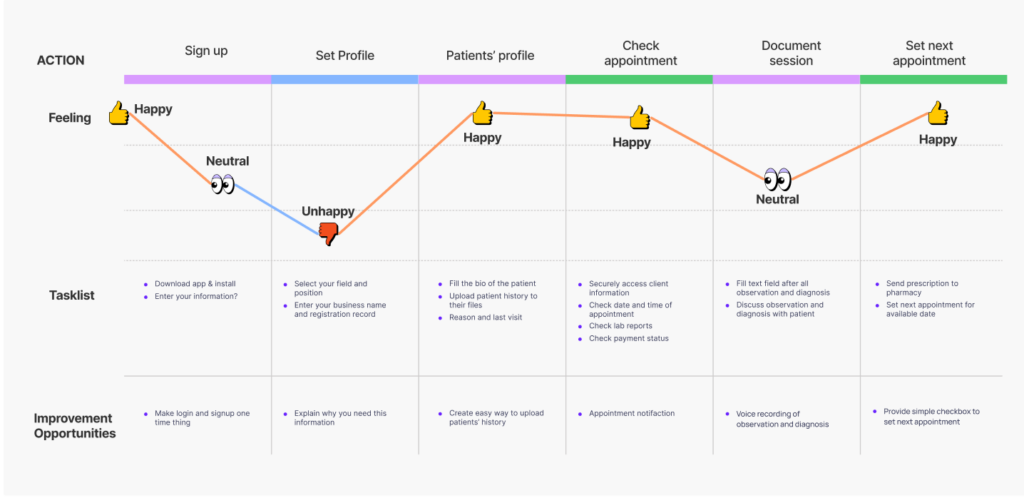
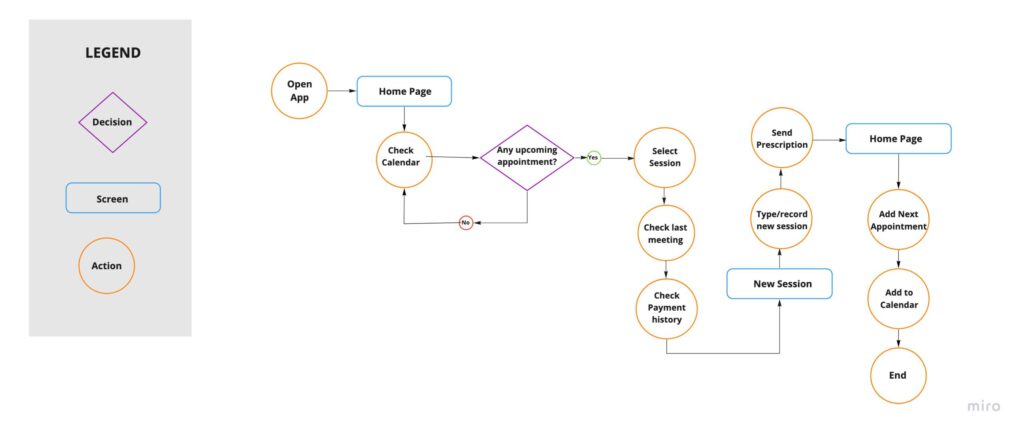
I created paper wireframes to come up with many ideas. An easy way to make the user check appointments and attend to patients on the app. All the UI elements that would be used for digital wireframes are present.
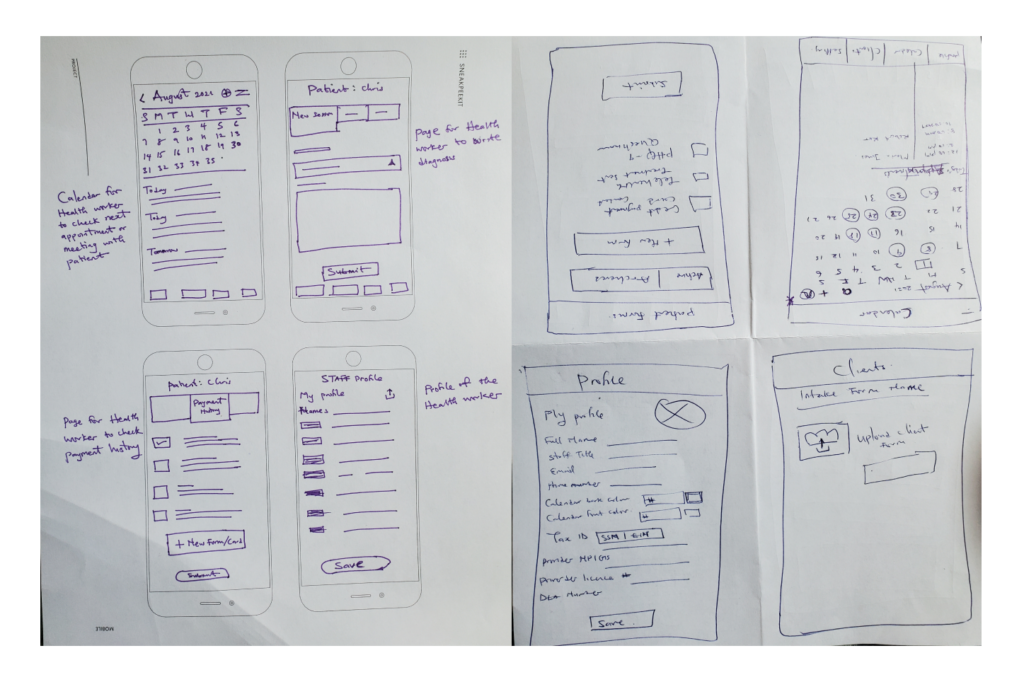
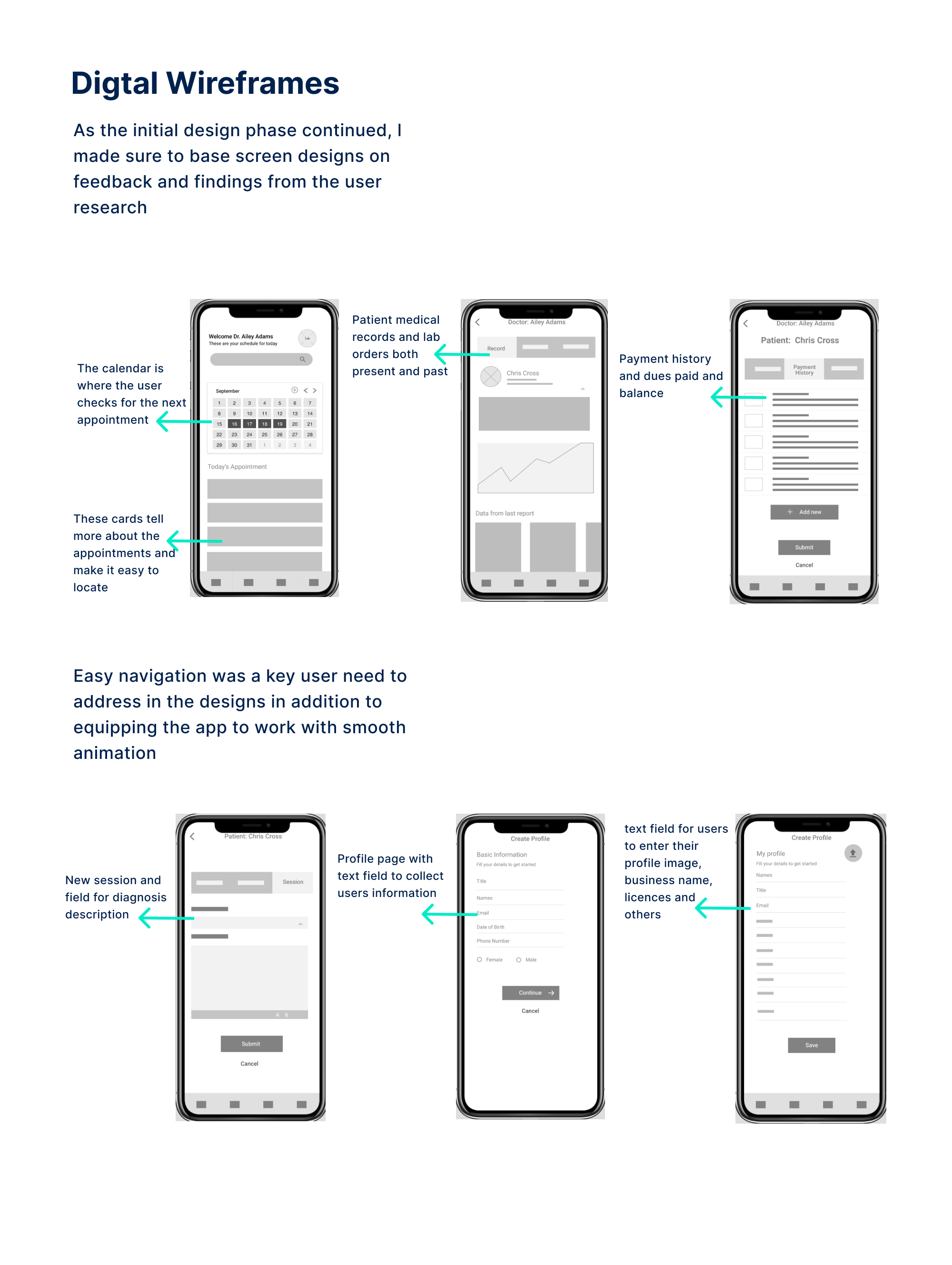
The low-fidelity prototype connected the primary user flow of signing up to attending to patients and adding staff members to the app to use the prototype in a usability study with users.
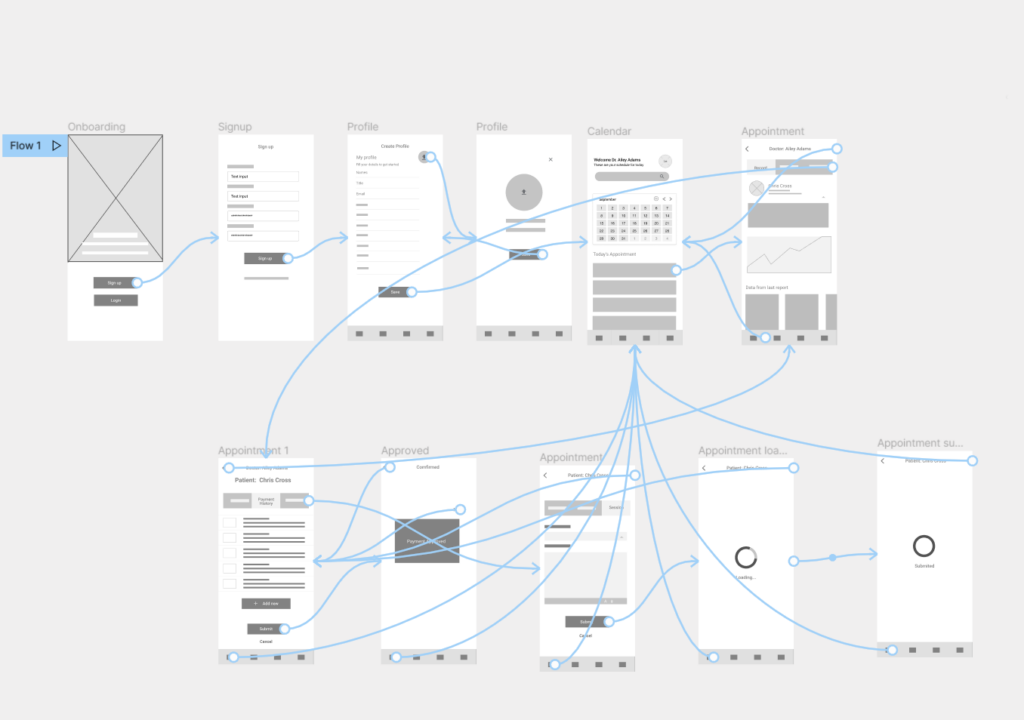
This unmoderated usability study was conducted among five participants of diverse backgrounds in the healthcare field.
Round one findings
Users need better cues for what steps to follow to check patients’ health records.
Users want better cues on how to use the calendar.
Round two findings

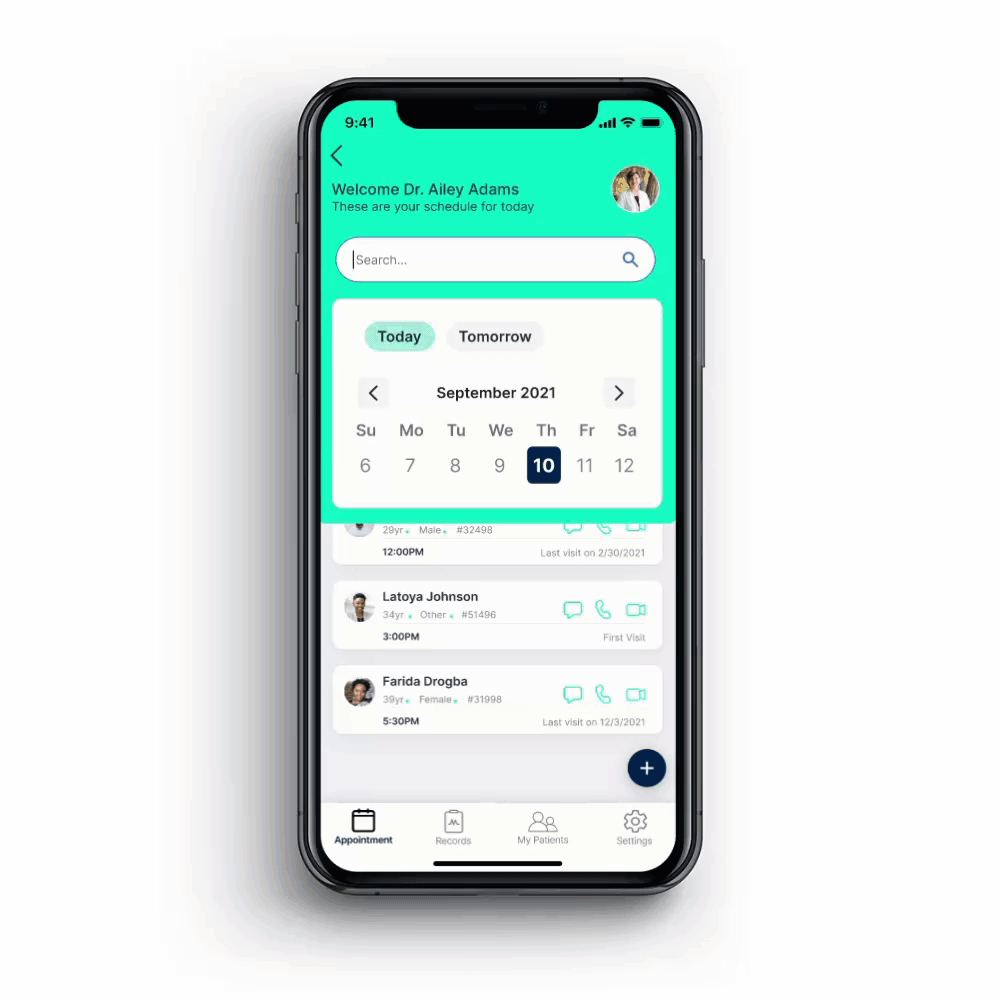
Used Icons to help make navigation easier.
Used detailed imagery such as illustrations and charts to help users better understand the designs.
Ensured enough color contrast, visible type, and white space for breathing space.
This app would allow small healthcare professionals to meet the needs of their patients fast.
One quote from peer feedback
”The App is a quick way of attending to Patients on the go.”
While designing the Mediclient app, I realized that the design process is not linear. But circular that requires back-and-forth iterations to create functional and desirable experiences.
Continue to look for ways to make the designs more accessible to everyone and ensure the UI is visually appealing.
Conduct another round of usability studies to validate whether the pain points users experienced have been effectively addressed.
Conduct more user research to determine any areas of need, and introduce other features like an instant chat between doctor-patients.